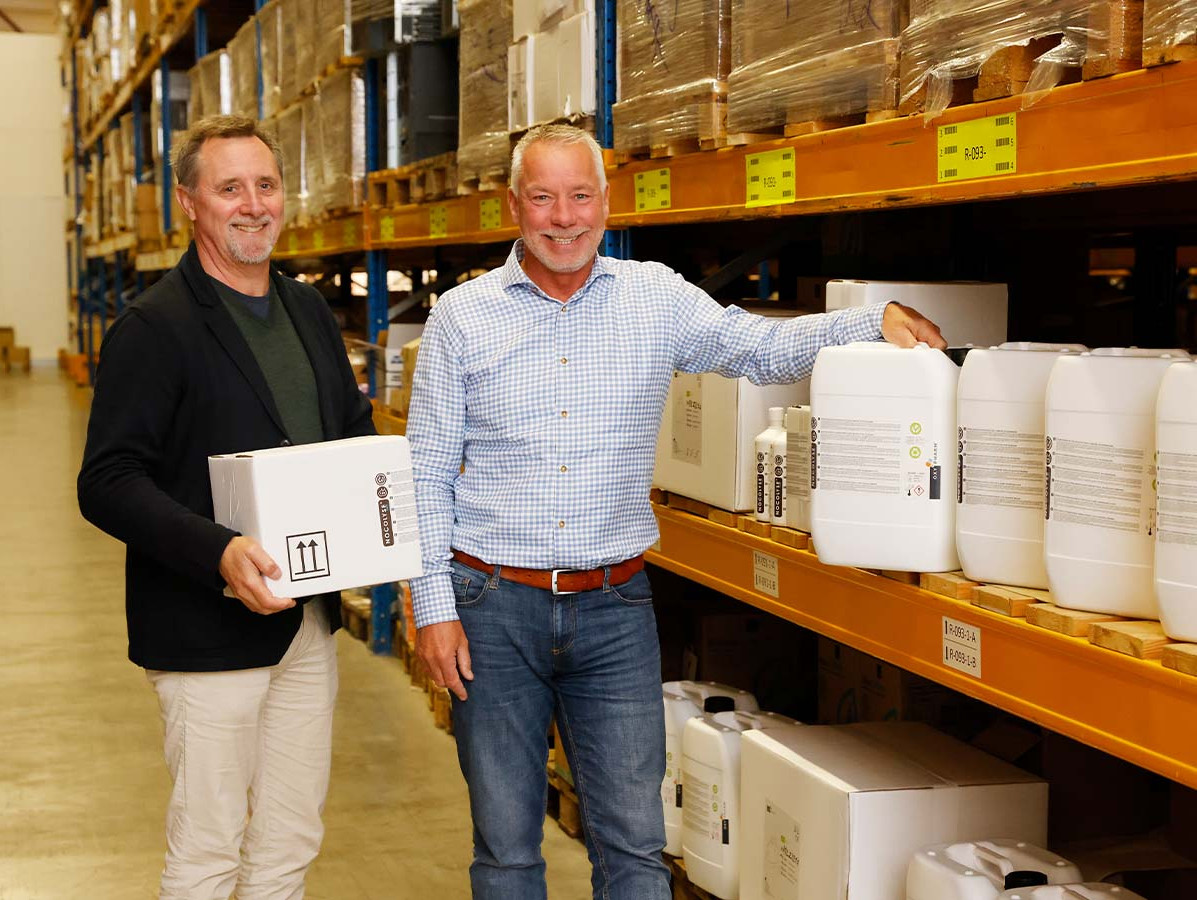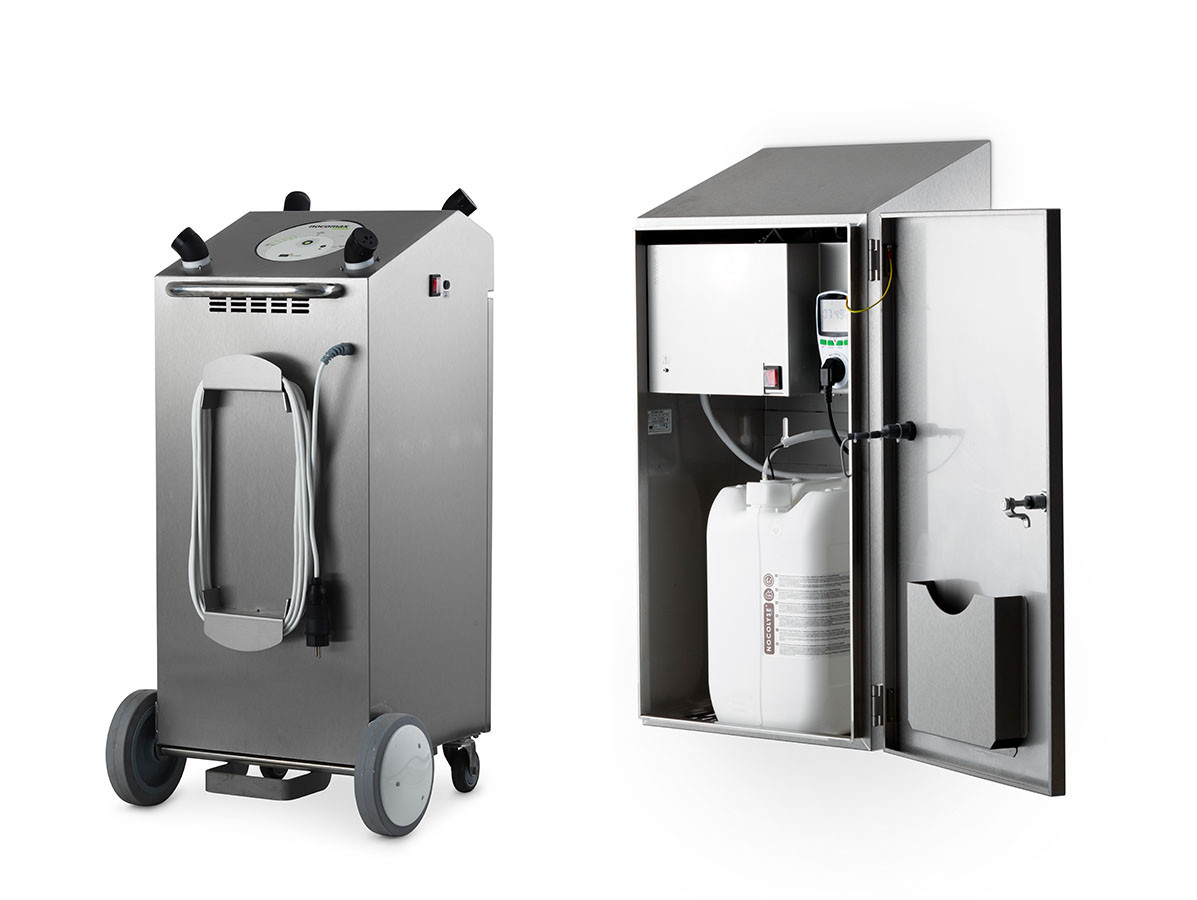
Two enthusiastic men, a hefty dose of perseverance, and above all a solid concept are the main ingredients of Simpel Desinfecteren. How do the owners look back on ten years of entrepreneurship?
Ask Robert Kostrubiec (right) about the disinfection method of Simpel Desinfecteren, and you'll get a complex story about static air particles, hydrogen peroxide, and the oxidation of ions. But for most customers, the chemical details are irrelevant: it works. “I was once at a food company where a molecular biologist sat; I didn’t have to explain anything to him. He was immediately convinced,” says Hugo ter Hoeve (left). In 2013, he and Robert met at a trade fair in Amsterdam. Robert was there with the Nocotech system (in short: a device and a disinfecting liquid), which he sold to the dental industry. Hugo was in legionella prevention at the time. Given his microbiological background, he was interested in the system: “It was already a proven method in the medical world, mainly used reactively after, for example, virus outbreaks. But the liquid contained silver; not an option for the food industry.”
The ambitious men thought things could be done differently. They met for coffee at Van der Valk in Breukelen, and the meeting marked the beginning of a fruitful collaboration. They visited the manufacturer of Nocotech Oxy’Pharm in France, which soon brought a foodproof liquid to the market. In the spring of 2014, Robert and Hugo registered their company Simpel Desinfecteren with the Chamber of Commerce. Over the years, the company grew significantly. However, they deliberately decided to remain a two-man operation. Robert explains: “This way, we can focus on sustainable relationships with customers. Of course, we can't and don't want to do everything ourselves. We outsource some tasks to reliable third parties. For machine maintenance, we use Rukatech's service, and for the storage and distribution of the liquid and devices, we have a great collaboration with Van Galen Logistics.”
After the founding, they waited for the official approval from the CTGB, but in the meantime, they executed business cases at various companies, including in the meat, fish, vegetable, and cheese sectors. “We had to kick down doors, you know. ‘Too good to be true,’ we often heard. That’s why we provided the devices for free and said: test it yourself. Then they discovered we weren’t selling hot air. After that, things started rolling. We also gratefully used the expertise and knowledge of Vakblad Voedingsindustrie – very nice,” Hugo says. Robert adds: “What also helped: in the early days, we saved a food company from bankruptcy. They were threatened with closure by the NVWA due to a persistent listeria contamination. They had tried everything. When they deployed our method, the problem was resolved within two weeks.”
‘We had to kick down doors, you know. ‘Too good to be true’, we often heard’

From the third year, things really took off. Hugo: “Customers talked to each other about our concept, then a snowball effect occurred.” They now serve around 125 Dutch food companies, from medium to very large, from fish processing and vegetable cutting companies to meat and meat substitute producers. Not only did their customer base grow over the years, but the products themselves also evolved. Kostrubiec: “We started with a small, mobile device. Now, we also have a large mobile device and a wall model: a stainless steel cabinet with two nozzles on the side, which blow the dry vapor into the room.” Recently, the entrepreneurs developed a module for the wall model themselves. Hugo explains: “An advanced time clock that can be operated online and sends data to a dashboard. It stores all data and, for example, sends a signal in case of a malfunction. With this module, the machine is fully automated.”
Robert notes that customers now have full confidence in the concept. “Initially, our products were used as a 'sure thing' alongside the traditional disinfection process, but now companies are increasingly using only our method. Logical, because it works simpler, faster, more effectively, and is more sustainable. You don't need water and chemical agents.” Hugo: “Our liquid is more expensive than traditional disinfectant, but you need much less of it. Plus, it saves time for the cleaning crew. So overall, you're cheaper off. But try explaining that to a head of finance who quickly compares the costs of the liquids. That’s still a challenge for us.”
The two look back on the past ten years with satisfaction. Their company has grown significantly, and their partnership has held up, despite warnings from others. They laugh: “It helps that we see each other infrequently.”
Photo: ©Ton Kastermans Fotografie
Source: vakblad Voedingsindustrie 2023